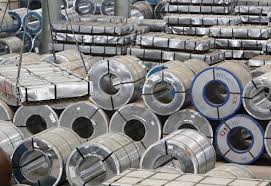Speaking on the occasion, Shri Pradhan said that on world energy landscape, India is the 3rd largest consumer of energy and also the 3rd largest importer of crude oil in the world. With Indian economy growing rapidly, energy demand is forecasted to grow more than any other country in the world in the next two decades. India has a very large requirement of petroleum fuels. Demand for petroleum products has been increasing at a CAGR of 5.5% from 2013 to 2017. He said that our domestic production will be unable to meet our ever increasing domestic demand of petroleum fuels and petrochemicals and India will continue to depend on imports for foreseeable future.

The Minister said that in last one year, we have also faced severe headwinds by way of rising oil prices. Since October 2017, crude prices have gone up 50% in US Dollar terms and 70% in Indian Rupee terms. Much of it is to do with geo-political events imposed on the World. We have to mitigate the impact and use the challenge as an opportunity. One of the mitigation measure is to create enough strategic reserve within the country to store adequate crude physically within the country. This will not only help in avoiding disruption in case of supply side disruptions, it will also help in reducing price volatility.Shri Pradhan said that with the objective to meet the energy security, Government of India formed Indian Strategic Petroleum Reserves Limited (ISPRL), a SPV under Ministry of Petroleum and Natural Gas. To further improve strategic reserve, the union cabinet granted approval for establishing additional 6.5 MMT of strategic petroleum reserve which will be able to provide extra 12 days of supply. After a detailed study considering technical and commercial factors, two locations – Chandikhol in Odisha and Padur in Karnataka have been selected as the optimum location for these SPRs. These two SPRs will add strategic petroleum reserves of 12 days in addition to 10 days of reserves achieved in Phase I. Indian refiners maintain 65 days of crude storage, and when added to the storage planned and achieved by ISPRL, takes the Indian crude storage tally to 87 days. This is very close to the storage of 90 days mandated by IEA for member countries. On the issue of Phase-II, he said that these are large investments requiring more than 1.5 billion US dollars of capital, and the Government plans to develop this under PPP framework.The Secretary, Ministry of Petroleum and Natural Gas Dr M.M.kutty and senior officers of the Ministry, Oil companies, ISPRL, stakeholders were present on the occasion.
Government of India has decided to keep the nation ahead in the quest for securing its vital crude oil buffer inventory by seeking to almost double the capacity of its underground storage caverns through the ambitious Phase-II programme which seeks Public Private Partnership in India’s emerging Hydrocarbon Sector.
Indian Strategic Petroleum Reserves Ltd. (ISPRL), a SPV created for the purpose of building the SPRs has successfully completed and commissioned the Phase I SPRs program.
The Union Cabinet has now accorded in principle approval for the Phase-II SPR program which entails creation of additional storage facilities of 6.5 MMT of crude oil to be stored in underground rock caverns at Chandikhol in Odisha and Padur in Karnataka with an envisaged investment outlay of Rs.11,000 Crores(US$ 1.6 Billion). The Investment model seeks partnership through DBFOT (Design, Build, Finance, Operate and Transfer) and offers prospective concessionaire the rights on the crude oil inventory as per an agreed term where the Government of India will have the first right of refusal on the inventory in times of exigencies. As a key takeaway the Concessionaire will have access to the large Indian refining market and multiple other revenue streams.
Underground storage of crude oil is more secure, safe, economical and environmental friendly than conventional above ground storage tanks. Many other developed countries have created crude oil reserves in different types of underground storage facilities. Conceived during early 2000s, the Indian Strategic Petroleum Reserves Ltd. (ISPRL) was created by Government of India as a Special Purpose Vehicle under MoP&NG in 2004 to give wings to its vision of building the first of its kind strategic crude oil storages in India and to insulate the country from a volatile crude oil supply market, supply disruptions and future oil shocks. The crude oil storages are constructed in underground rock caverns and are located on the east and west coast of India namely Visakhapatnam, Mangalore and Padur. Crude oil from these storage installations are envisaged to cater to the Indian refineries either through pipelines or a combination of pipelines and coastal shipment.
With a total investment of USD 600 Million towards the construction of Phase I SPRs, the facilities at Visakhapatnam with a storage capacity of 1.33 MMT witnessed a successful part commercialisation of 0.3 MMT storage capacity. HPCL has taken over the 0.3 MMT storage capacity as part of its refinery stock holding and operation, thereby unlocking the land parcel for the ongoing refinery expansion program; the facilities at Mangalore with a storage capacity of 1.5 MMT recently witnessed a successful G2G collaboration where in ADNOC is storing 5.86 MM bbl at Mangalore SPR facility. The facilities at Padur with a storage capacity of 2.5 MMT has also been commissioned and is ready to take in crude oil inventory including through PPP mode for filling and operation of the inventory.


The Phase-II SPR program has been planned to create additional storage capacity to cater to the wider refining and consuming hubs in the unforeseen event of a longer period of supply disruption. The envisaged PPP model promises valuable incentives to an array of stakeholders looking to profit from this business alliance ranging from supply side assurance of downstream refiners; logistics and location advantage; availability of low cost underground storage facility as an economical storage alternative; reduced captive above ground storage with flexibility of multiple grade crude oil and multiple revenue streams; suitable land parcel and geological setting for creation of SPR, promising opportunity for financing, to a foreseen certainty of cash flows due to sustained Oil & Gas demand market .
ISPRL, the strategic arm of the Ministry of Petroleum and natural Gas, Govt of India is soliciting commercial partnerships for the Phase II SPR program and expects a keen interest from large energy stake holders both from India and abroad. To elicit expressions of interest from a wider spectrum of energy industry, investors and financing partners ISPRL is organising road shows at New Delhi, Singapore and London.
 Indian Industry Plus A Pratisrutiplus Suppliment
Indian Industry Plus A Pratisrutiplus Suppliment


















